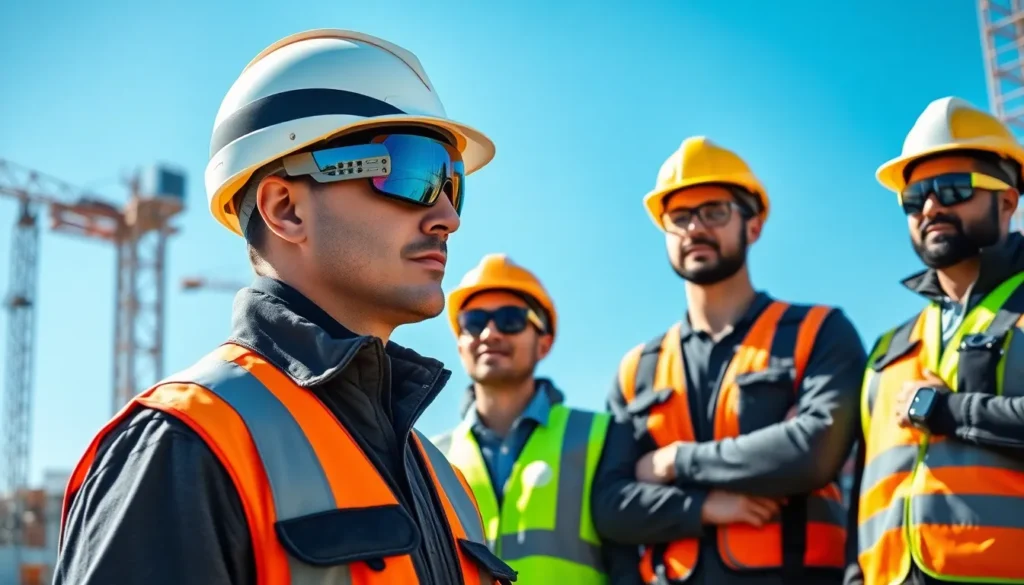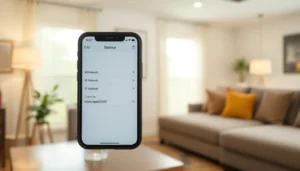Table of Contents
ToggleImagine a world where construction workers are equipped with high-tech wearables that not only enhance safety but also boost productivity. Sounds futuristic, right? Well, thanks to construction wearables, that future is now. These innovative tools are not just sci-fi gadgets but essential gear that can transform the way construction operates. In an industry where safety is paramount, wearables have emerged as a game-changing solution, blending tech with practicality. Let’s jump into this exciting realm of construction wearables and see just how they can secure lives and streamline processes.
Understanding Construction Wearables

Construction wearables refer to innovative technological devices designed to enhance worker safety and efficiency on construction sites. These wearables can range from helmets equipped with augmented reality displays to smart vests that track workers’ health metrics in real time. The unique aspect of these devices lies in their ability to collect and analyze data to prevent injuries, thereby fostering a safer working environment. They do this by monitoring factors such as exposure to hazardous environments or fatigue levels. Overall, construction wearables occupy a critical intersection between technology and labor, aiming to enhance the overall job experience.
Types of Construction Wearables
When it comes to construction wearables, variety is the spice of life. There are several types each designed to fulfill specific needs on site:
Smart Helmets
Often dubbed the “smartest” accessory on the site, these helmets can provide augmented reality features, which display vital information to workers while keeping their hands free.
Smart Glasses
These nifty devices allow workers to access project plans or instructions without the need to dig through papers or pull out a tablet. Think of it as having a mini demolition expert right on your nose.
Exoskeletons
Ideal for heavy lifting, exoskeletons provide support to the wearer’s body, reducing strain and preventing injuries.
Health Monitoring Wearables
Wristbands or vests that monitor heart rates, blood pressure, and fatigue levels can offer real-time data to supervisors. With this info, they can intervene before a small issue turns into a big problem.
Location Tracking Devices
These gadgets help keep track of workers’ locations in real time, improving site safety by quickly identifying who is in potentially dangerous zones.
Benefits of Using Construction Wearables
So why should companies consider integrating construction wearables into their operations? The benefits are as compelling as a great morning coffee:
Enhanced Safety
First and foremost, wearables significantly enhance workplace safety. Real-time monitoring and alerts can help in identifying hazards before they lead to accidents.
Increased Productivity
By streamlining communication and providing instant access to information, these devices allow workers to focus more on the task at hand instead of juggling devices.
Cost Savings
Less workplace injuries mean lower insurance premiums and fewer days lost due to accidents. Over time, investments in wearables can lead to significant cost savings.
Data-Driven Insights
Data gathered through wearables offers invaluable insights into worker performance and site conditions. Companies can use this information to make informed decisions, enhancing overall operation efficiency.
Challenges and Limitations of Construction Wearables
Even though the numerous advantages, construction wearables come with their own set of challenges:
Initial Costs
Adopting new technologies can require significant upfront investments. Companies may hesitate to commit if they’re unsure about the ROI.
Integration Issues
Existing systems might not easily integrate with new wearable technology, potentially leading to compatibility issues.
Data Privacy Concerns
Monitoring workers raises questions about privacy. Ensuring that data is secure and only used for its intended purposes is crucial.
Battery Life and Durability
Construction environments can be tough, so ensuring that wearables are both durable and have sufficient battery life is key for sustained use.
Future Trends in Construction Wearables
As technology continues to advance, the future of construction wearables looks incredibly promising.
AI Integration
Artificial Intelligence will likely become a core component, allowing wearables to offer predictive insights and automated alerts. This could revolutionize how safety standards are upheld on site.
Increasing Connectivity
With 5G technology on the horizon, wearables will connect to the internet more robustly. This will enable real-time data sharing across the site and lead to more comprehensive safety monitoring.
Customization
As more companies adopt wearables, we will likely see more tailored solutions that address specific company needs or job types. Customization ensures that each piece of wearable tech fulfills its purpose effectively.
Implementing Construction Wearables in Your Organization
For organizations looking to carry out construction wearables, the journey begins with thorough research. Here are some steps to consider:
- Assess Needs: Determine what specific challenges the organization is facing. Safety incidents, productivity issues, or data management can all be significant focuses.
- Pilot Programs: Before a full-scale launch, conducting pilot programs can help in assessing the effectiveness of selected devices in real conditions.
- Training: Educating employees on using the equipment properly is crucial to maximize benefits. A tech-savvy team is an effective team.
- Continuous Evaluation: Transformation is a continuous process. Regularly assess the impact of wearables and adapt as necessary.







